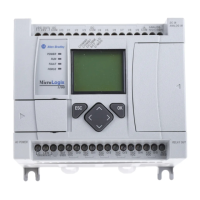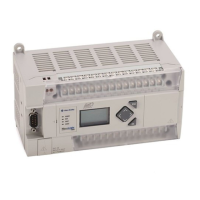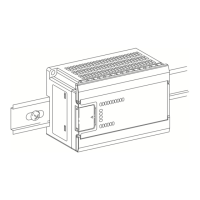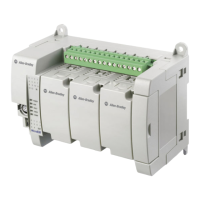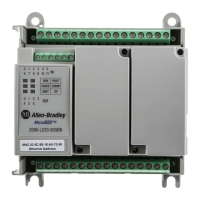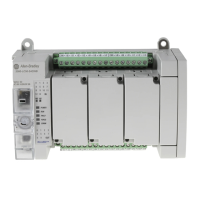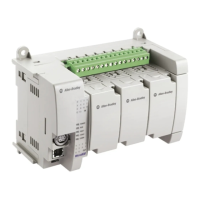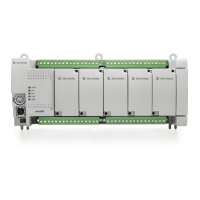Publication 1764-UM001B-EN-P - April 2002
E-4 Understanding Communication Protocols
For multi-drop modem connections, or for point-to-point modem
connections that require RTS/CTS handshaking, use DF1 Half-Duplex
slave protocol.
Dial-Up Phone Modems
Some dial-up phone line modems support point-to-point Full-Duplex
communications. A MicroLogix 1500 controller, on the receiving end
of the dial-up connection, can be configured for DF1 Full-Duplex
protocol with or without handshaking. The modem connected to the
MicroLogix controller should support auto-answer. The MicroLogix
1500 Series B processors (1764-LSP and 1764-LRP) support ASCII out
communications. There fore, they can cause the modem to initiate or
disconnect a phone call.
Leased-Line Modems
Leased-line modems are used with dedicated phone lines that are
typically leased from the local phone company. The dedicated lines
may be in a point-to-point topology supporting Full-Duplex
communications between two modems or in a multi-drop topology
supporting Half-Duplex communications between three or more
modems.
IMPORTANT
Never attempt to use DH-485 protocol through
modems under any circumstance.
TIP
All MicroLogix controllers support RTS/CTS modem
handshaking when configured for DF1 Full-Duplex
protocol with the control line parameter set to
Full-Duplex Modem Handshaking or DF1
Half-Duplex slave protocol with the control line
parameter set to “Half-Duplex Modem”. No other
modem handshaking lines (i.e. Data Set Ready,
Carrier Detect and Data Terminal Ready) are
supported by any MicroLogix 1500 controllers.
MicroLogix 1500 1764-LRP processors also support
DCD (Data Carrier Detect)
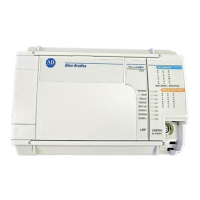
